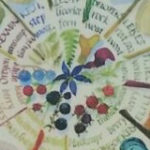Living as an indigenous person today is seemingly not so bad for most people, but it isn’t as great as everyone thinks for every person. We all have variable experiences.
It is not possible to just put someone in an indigenous box—you don’t have an indigenous experience; you have a human experience. There are opportunities out there for indigenous people, but these opportunities are at the other side of the bridge. But not everyone even has a bridge; most don’t, actually.

I was fortunate with the system; it helped me today, it helped me yesterday, and it will continue to help me for the next little while. I had to work for it and still do, but it was there for me. All the stars aligned.
I lived next to a band with post-secondary programs and that had adequate funds for some of us to use. I got into school; thousands of others didn’t. I navigated through the campus with support; hundreds of others didn’t. When I graduated my first year, only a few others did.
The reasons why vary: it could be because of poor living conditions, or family situations, or having no running water, or being up against a system that works against them and classrooms that don’t accept them. Not every reserve is big and in a town.
For every cliff to cross there is a bridge, yes, but some have rotted out; some have burned; some aren’t safe to walk across. Some places are untouched and never had a bridge in the first place.
I was fortunate to have one ready for walking, so for me indigenous living is great. My community is relatively healthy, the town I live in suits my needs, and people were there to help me along the way. But not everyone has all of those opportunities, because the system doesn’t exactly work for us. Most of the time it works against us.
I bring all this up because it isn’t easy being an indigenous person today. I am happy to have had the support, but remember that although I’m one person you see doing well, there is an army of people behind me who don’t even have water.
